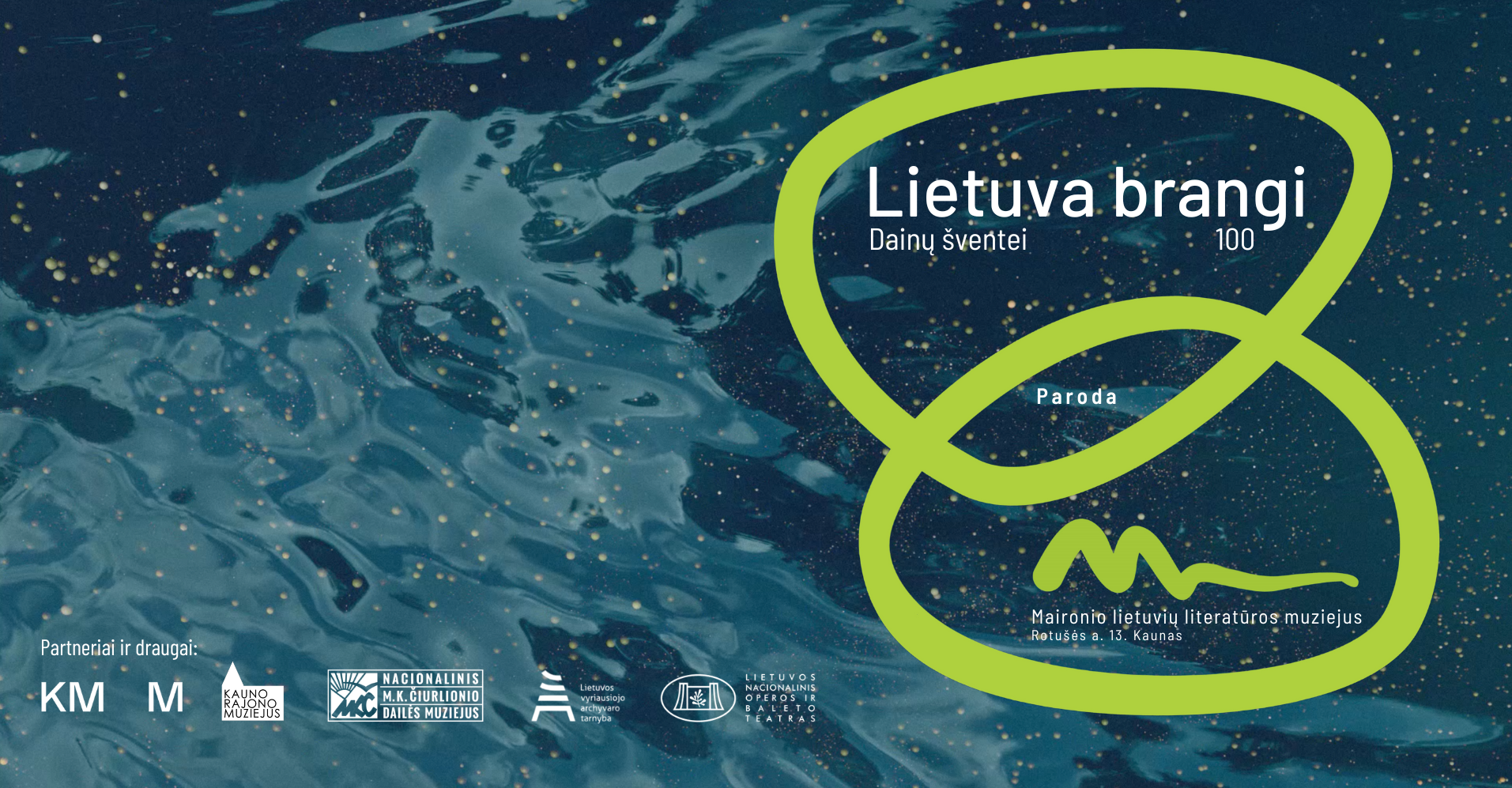
Exhibition “My Dearest Lithuania”
All songs begin with text and music, a poet and a composer. The song “My Dearest Lithuania” (Lietuva brangi) was written by the most famous of classical artists - the poet Jonas Mačiulis-Maironis and the composer Juozas Naujalis. And then it became famous, it was sung by the whole of Lithuania and became the unofficial Lithuanian anthem during the Soviet era.
This year we are celebrating the centenary of 1924, when many choirs joined together for the first time and sang at the Song Festival. Chief conductor J. Naujalis waved his baton and started a tradition that has never been broken.
In the exhibition “My Dearest Lithuania”, we look at time which both changes and preserves traditions. The metaphor of flowing time and a river reveals the transformations of our national identity. We tell the story of the creative friendship between two artists - Maironis and J. Naujalis, the genesis of the song “My Dearest Lithuania”, its importance during the Interwar period Lithuania, when the nation's idenity still needed to be strengthened, and its importance in the Soviet era, when it had to be preserved, which only made it even more enduring. There were families who sang it quietly around the family table on holidays, and there were the brave ones who stood up when it was sung in the Song Valley during the years of prohibition. It is a song like no other that has absorbed the history of an entire nation.
But what is the historical stage we are in today, and what meaning do we give to the words of Maironis, which have been around for more than a century? Two renowned artists - director Gintarė Valevičiūtė-B. and composer Marius Salynas - reflect on this. (Together they created the video installation: Margarita Valionytė, Emilija Dirsytė, Sofija Laurušonytė). In his poem Maironis not only admired Lithuania, its nature and magnificent history, but also noted some painful topics. The two artists continue the poet's theme in the language of contemporary art, asking themselves and all of us what is most important.
The exhibition was organised by:
curator Audronė Meškauskaitė
designer Inga Zamulskienė
museum team: Vaiva Balickienė, Audronė Gedutienė, Jūratė Ivanauskienė, Jonas Jonušas, Regina Mažukėlienė, Daiva Šarkanauskaitė
